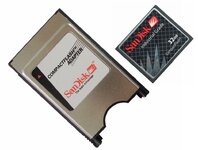Thank you for your answer, but I am sorry, this topic is useless. I have a bad copy of OS 8 floppy images.
I have copied the System Folder from the Tools disk 2 to the HD, the Mac boot on it, but it can't read my install disk.
So I will check an other copy, if possible readable from Linux, Windows or a recent Mac (I have an M2 mac mini) for create floppy...
Very cordially,
Fanordi
I also have a PowerBook 1400! I think you have multiple routes for getting Mac OS 8.0 (though Mac OS 8.1 is better IMHO), but it would be helpful if you could first let us know what the spec of your PowerBook 1400 is (i.e. the CPU speed, RAM, Hard Disk size).
One obvious way to get the OS onto the PowerBook 1400 is to remove the Hard disk; plug it into a 2.5" ATA to USB adapter (if you have one) and then mount it on Linux. Then, partition it; then you can use HFS Utils to copy the full CD Install image to the second partition. Given that you can run the Tools floppy disk you can probably partition it. Or maybe, since the disk already has an HFS (or HFS+) partition, it might be possible to just use HFS Utils to copy the CD install image to the HD partition and then mount it using DiskCopy.
It was a bit
more convenient for me, though as you'll see still pretty convoluted. I started out with a PowerBook 1400/117MHz + 16MB RAM + System 7.5.3 on a 750MB HD. I had no floppy drive, no built-in CD Drive and no PCMCIA to CF adapter. What I did have was a PowerCD external SCSI CD ROM drive and a SCSI ZIP Drive. Unfortunately, I didn't have a HDI 45 (the SCSI port at the back of the PowerBook 1400) to normal Mac SCSI adapter.
The first thing I did was remove the HD and plug it into a 2.5" ATA to USB adapter, which I then plugged into a Raspberry PI 3. I used the
dd command to do a raw copy of all the sectors of the HD, before this old HD died! It was then possible to mount the HD using HFS Utils; so then I could make changes to it and then perhaps use
dd again to copy the data back to the real HD.
The next thing I did was to buy a 2.5" ATA to SD card adapter, which meant I could plug in a 16GB MicroSD card. I used
dd on the PI to copy the HD image to it; so then I had a 750MB HD image on the MicroSD card, which would then boot. Progress!
Then I made a breakthrough, I found that I had a HDI 45 to SCSI /dock adapter at my Dad's house, so I could then try and use the PowerCD and/or ZIP Disk. The PowerBook 1400 didn't have the right PowerCD, nor ZIP Disk drivers on. I'm pretty sure I
could have copied them from Macintosh Garden, but instead I searched through all my ZIP disks until I found a ZIP Disk with a ZIP Driver in a boot partition.
Then I had a means of reading a ZIP drive. I could boot with that in, then try all the other ZIP disks; and found a proper ZIP driver amongst those, which I could then copy to the System folder on the SD card. I also found a PowerCD driver amongst the ZIP disks, but that didn't seem to enable the PowerCD to be read, until I discovered it conflicted with the standard SCSI Apple CD driver.
So, now I could read both ZIP disks and CDs, which was handy, because I had bona-fide Mac OS 8 on a real CD and I knew the 8.1 update would fit on a Zip disk.
I did some raw sector disk analysis (alongside looking up partition information); then wrote a little utility on the PI for duplicating partitions: I created 5 x 750MB partitions: One for System 7.5.3 (HFS), another for Mac OS 8 (=> 8.1), and 3 more for data and apps. That utility is somewhere on this site.
Doing this meant I didn't lose System 7.5.3, but I now had several more. I used the PowerCD to install Mac OS 8 from CD (I don't have Mac OS 7.6.1 at all, never used it). I found the British Mac OS 8.1 update from the Wayback machine (which is free); and then I was pretty much sorted.
More recently I have actually bought a Floppy drive unit! And I've also bought a PCMCIA CF card adapter, which has enabled me to copy the OS's to the CF card; then repartition the internal SD card; and then copy it all back (with all the Mac OS 8.1 stuff on a single HFS+ partition).
OK. So in conclusion - if you don't have all the interfaces, as I initially didn't, you're in for the long-haul, getting the PowerBook 1400 to where you want it to be. View the process as an adventure rather than expecting to be able to get to the solution in one step and just feel good for every bit of progress you make. In the end you'll have had hours of fun with the PowerBook just in order to sort it out to your satisfaction!
-cheers from Julz

